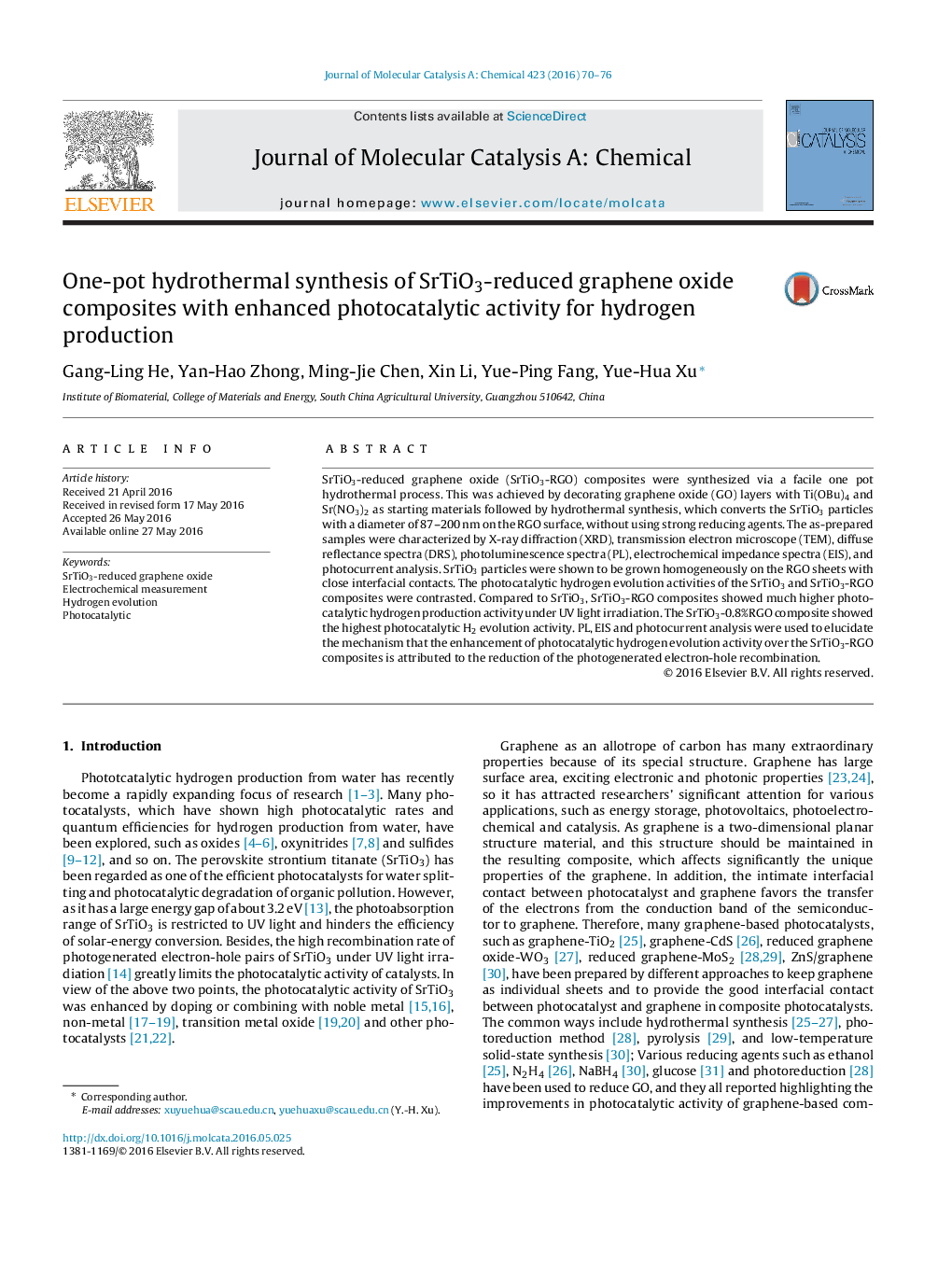| Article ID | Journal | Published Year | Pages | File Type |
|---|---|---|---|---|
| 64526 | Journal of Molecular Catalysis A: Chemical | 2016 | 7 Pages |
•SrTiO3-RGO composites were synthesized via a one pot hydrothermal process.•Ethylene glycol is used as the solvent of Ti(OBu)4 and the reducing agent of GO.•SrTiO3-RGO showed higher photocatalytic hydrogen evolution than SrTiO3.•The high H2 evolution of SrTiO3-RGO is attributed to electron-hole separation.
SrTiO3-reduced graphene oxide (SrTiO3-RGO) composites were synthesized via a facile one pot hydrothermal process. This was achieved by decorating graphene oxide (GO) layers with Ti(OBu)4 and Sr(NO3)2 as starting materials followed by hydrothermal synthesis, which converts the SrTiO3 particles with a diameter of 87–200 nm on the RGO surface, without using strong reducing agents. The as-prepared samples were characterized by X-ray diffraction (XRD), transmission electron microscope (TEM), diffuse reflectance spectra (DRS), photoluminescence spectra (PL), electrochemical impedance spectra (EIS), and photocurrent analysis. SrTiO3 particles were shown to be grown homogeneously on the RGO sheets with close interfacial contacts. The photocatalytic hydrogen evolution activities of the SrTiO3 and SrTiO3-RGO composites were contrasted. Compared to SrTiO3, SrTiO3-RGO composites showed much higher photocatalytic hydrogen production activity under UV light irradiation. The SrTiO3-0.8%RGO composite showed the highest photocatalytic H2 evolution activity. PL, EIS and photocurrent analysis were used to elucidate the mechanism that the enhancement of photocatalytic hydrogen evolution activity over the SrTiO3-RGO composites is attributed to the reduction of the photogenerated electron-hole recombination.
Graphical abstractFigure optionsDownload full-size imageDownload high-quality image (248 K)Download as PowerPoint slide
